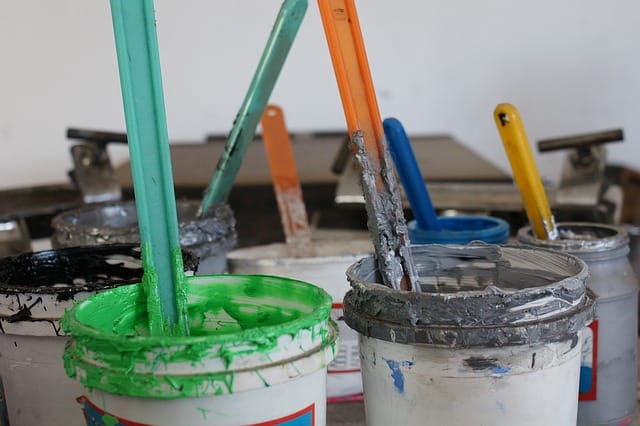
Differences Between Digital and Screen Prints
There are two main printing methods utilized across the world today: screen and digital printing. Each of these different methods has their benefits and downsides. Understanding when each is preferable is a good way to gauge when to use one for your printing methods. Screen printing is often the preferred method, but digital has its uses.
How Screen Printing Works
Screen printing is the use of various stencils to create images. These stencils create the outline for the ink to be applied directly to the printing surface. It can be a time-consuming process because new stencils need to be applied each time a new color is applied. However this creates a dense and memorable style that is hard to get in any other way.
Proper stencil printing requires the use of professionals who have not only trained in designing eye-catching items, but who know how to print them properly. Carefully combining ink using these various screens and stencils takes a lot of skill and a careful eye. As a result, it can sometimes be a little more expensive, but the quality improvement is noticeable.
The Nature Of Digital Printing
Digital printing is a new process that requires processing the image with a computer and then using a computer-based process to streamline the printing. Instead of applying multiple stencils and screens by hand, the computer printer will do all of the work with precision and accuracy. This does decrease the cost of the process, but these savings are balanced out by the costly investment of the machine.
Many prefer digital because it is not only quicker than screen printing, but has less room for errors. Naturally, problems with printing, such as a computer error or machine jam, could be a concern. The streamlined and quicker printing speed makes this an option that many still turn to over screen printing, in spite of the latter procedure’s many benefits.
When Screen Printing Is Superior
Screen printing is typically done when a design needs a high level of vibrancy. The ink in screen printing is applied more thickly than with digital. As a result, the colors will be brighter and more comfortable on the eye.
That’s why so many people turn to it to print water bottles, koozies, t-shirts, and much more. Screen printing is also appropriate for uneven or curved surfaces, as the designs can be adjusted by hand. So while you pay a little bit more here, the quality is high.
The Moments When Digital Is Necessary
Digital printing is appropriate when you’re looking to save money or if you need items that are very detailed. For example, digital printing is appropriate for leaflets and handout items that don’t have an excessive level of ink. The thick ink spread of screen printing isn’t necessary with these types of items.
And digital printing is a lot quicker and less expensive than screen printing. That said, you may be losing some quality in your print jobs. This might not be a big deal if you aren’t printing very colorful designs, but it will be problematic when you print shirts and other items.
